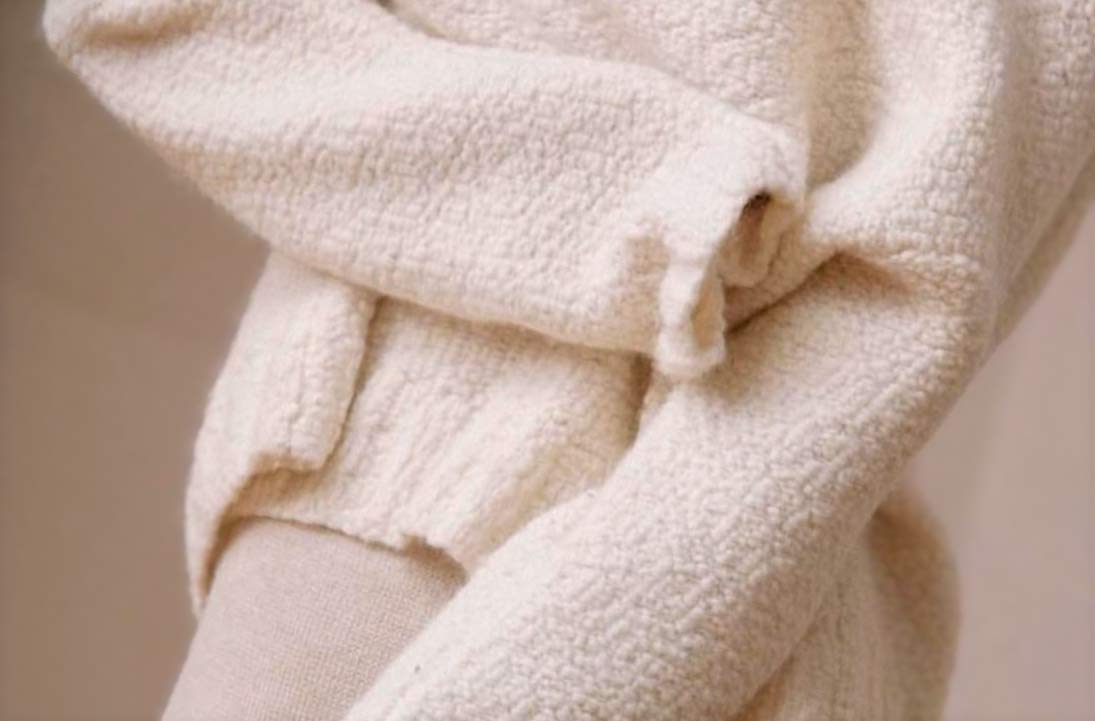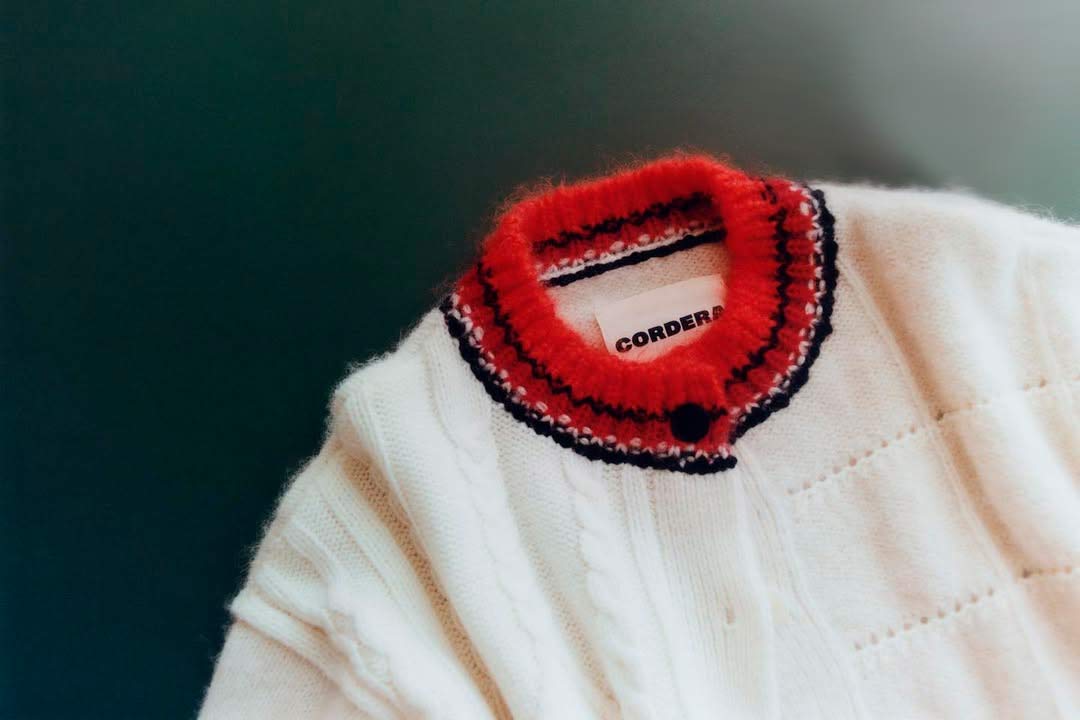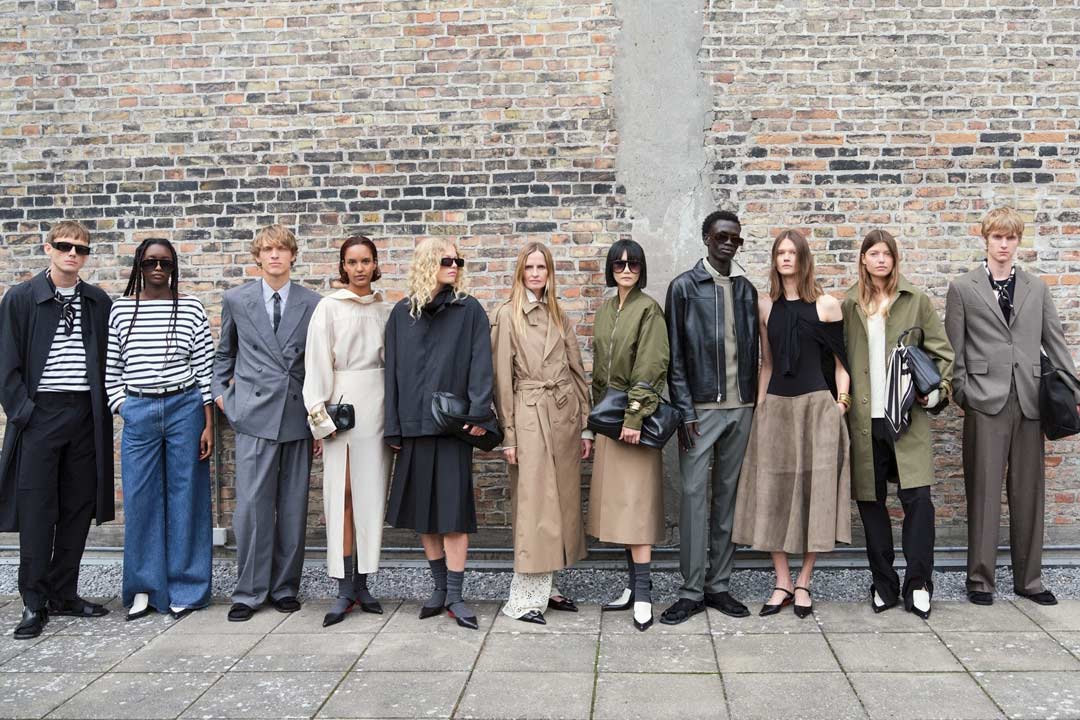As stylists now say, “Textured neutrals are where comfort meets craftsmanship” – knitwear that’s calm in tone, rich in texture, and wearable all year.
By 2025, slow-made knits and sustainable fabrics have come to define good taste. People are choosing fewer, better pieces – sweaters that work in March and September, trousers that feel right for both a meeting and a lazy afternoon.
The real question now isn’t why this trend stuck, but who’s doing it best, and how neutral knitwear bridged the space between the studio and the sofa.

Why Everyone’s Reaching for Neutral Knitwear
There’s a reason half of social media’s style feeds still orbit around beige, walnut, and grey. Neutrals calm visual noise. They go with everything, age slowly, and shift seamlessly between light and space.
A stylist from Montreal described it simply: “You can build trust with texture. People see fabric before they see colour.”
That shift matters. Texture carries the emotion once reserved for bold prints. Ribbing adds movement, slub knits create depth, and brushed fibres catch light in subtle ways. And for anyone working remotely (still the norm for millions of Canadians in 2025), knitwear has become a quiet form of expression: comfort with purpose.
- Taupe, cream, and umber feel consistent year-round
- Matte finishes replace shine for a more natural look
- Soft neutrals make mixed-texture layering effortless
The Fabrics Defining 2025
Knitwear used to mean itchy sweaters and complicated washing instructions. Now it means engineering. Every fibre tells a story, not just about comfort, but about how clothing is made and reused.
Fabric | What It Brings | Best For |
|---|---|---|
Kid Mohair | Airy, feather-light texture that traps warmth | Indoor layering, coastal climates |
Alpaca Blends | Durable, naturally insulating, gentle on skin | Fall and early winter |
Organic Cotton | Breathable, smooth, easy to care for | Everyday basics |
Merino Wool | Temperature control, soft elasticity | Workwear and travel |
Rayon Rib | Subtle shine, stretch, and structure | Transitional weather |
Material transparency has become a selling point. Many of the labels leading this shift publish fibre origins and production footprints online. Consumers aren’t asking for “sustainability” as a buzzword anymore. They’re asking for receipts.
Designers Who Got Knitwear Right
Across continents, a few designers have set the tone for how modern knitwear should feel. They’re small enough to care about craft but big enough to influence taste.
Frisson Knits
Auckland’s Frisson Knits works exclusively with ethically sourced kid mohair. Their cardigans have a floaty lightness that makes sense in a climate where one day can swing between wind and sunshine. The Becca Cardigan has become a quiet classic – a piece that softens any outfit without adding bulk.
Lauren Manoogian
Manoogian’s studio began as a series of textile experiments. Now, her knitwear line blurs the line between art and comfort. The Rib Sail Pullover and Slub Pants are crafted with Peruvian alpaca and hand-dyed with plant pigments. They feel lived-in from day one, and that’s intentional.
Cordera

In Galicia, Cordera builds on a “fewer, better” philosophy. Every piece is crafted in small, family-run factories using soft, natural fibres and timeless shapes. The white cotton pleated skirt reflects that approach perfectly – structured yet relaxed, easy to pair with mohair knits or a fitted top. Alongside staples like the Soft Wool Pants and Baby Alpaca Dress, it shows how Cordera turns minimal design into something quietly expressive and built to last.
Filippa K

Often cited as the blueprint for circular fashion, Filippa K focuses on traceable production and repairability. Their Merino Short Cardigan and minimalist tees embody Scandinavian design with an environmental backbone.
Paloma Wool
Based in Barcelona, Paloma Wool treats clothing as visual storytelling. Each design, whether a brushed knit or sculptural shoe, carries a sense of place and artistry. The black Leslie pumps, made locally from textured leather with a soft, curved heel, add subtle polish to Paloma’s neutral knitwear and accessories like the Hana Sweater or Brady Beanie. It’s wearable art that moves easily between gallery walls and everyday life.
Decade Studio
Canadian label Decade Studio specializes in denim, but earns its place here because of fit. Their jeans, made from organic Italian cotton, are the natural anchor for soft knits. When layered with mohair or alpaca, they balance comfort with structure.
Amomento
From Seoul, Amomento brings a modern precision to classic knitwear. The lime rib two-way zip-up cardigan captures the label’s signature balance – fitted yet flexible, clean but playful. Designed to be worn open or zipped, it doubles as a light jacket through transitional weather. The piece has become a stylist favourite for its cropped shape and fine rib texture that layers easily under coats or over relaxed trousers.
How to Keep Neutrals Interesting
The biggest misconception about neutrals? That they’re boring. In practice, texture replaces colour as the visual focus. A brushed mohair next to matte cotton creates contrast without chaos.
Mixing tones within one family (think sand with oatmeal, or grey with taupe) adds depth. Small accents, like a polished shoe or metallic belt buckle, keep soft layers from blending too far into the background.
“When shooting lookbooks for neutral outfits, stylists often adjust light temperature rather than fabric colour. Natural light tends to exaggerate warmth. Cooler lighting keeps beige from turning yellow.”
Building a Five-Piece Knit Capsule
A capsule doesn’t have to mean strict minimalism. It’s about creating a rhythm between textures and shapes so that every piece connects.
These five pieces can rotate through dozens of combinations. Pair mohair with denim one day, alpaca with wool trousers the next.
Item | Role | Recommended Label |
|---|---|---|
Mohair cardigan | Airy top layer | Frisson Knits |
Alpaca sweater | Core autumn piece | Lauren Manoogian |
Cotton skirt or relaxed pant | Neutral base | Cordera |
Ribbed zip-up | Structured fit | Amomento |
Simple pump or belt | Finishing detail | Paloma Wool |
Caring for Knits Without Fear
The good news: modern knitwear isn’t as delicate as people assume. Most fibres are resilient if treated gently.
Our basic care checklist:
- Hand wash or machine-wash cold on a delicate cycle.
- Lay flat to dry on a towel, never hang wet knits.
- Use a sweater comb for light pilling.
- Store folded, ideally in cotton bags rather than plastic.
- Air garments between wears to avoid overwashing.
Woolmark data from 2024 suggests that extending the life of one wool garment by nine months reduces its carbon impact by 20–25%. In short, taking care of your clothes is sustainability you can measure.
